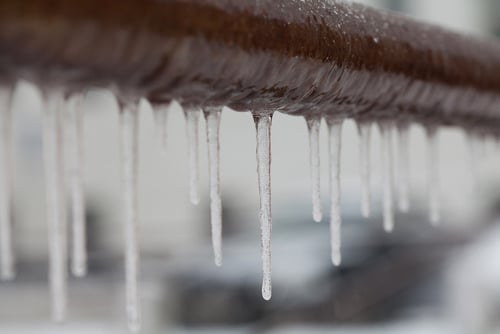

“Let it snow, let it snow, let it snow,” and “Walking in a winter wonderland.” These are phrases that conjure up warm feelings, excitement, and happiness during the long, cold winter months, but a costly denied insurance claim on your investment property could be a deep freeze to your bank account if you don’t plan accordingly. The brutal temperatures and a large amount of precipitation this year comes with the inherent risk of loss that can easily be mitigated with a few simple steps and the right insurance advice.
As we move into the winter months, a landlord’s worry just begins. Instead of hibernating, investment property owners should be on high alert, since some of the costliest claims can come during the winter months, and can easily be avoided. The first thing that a property owner or manager should be thinking about is how to prepare the property in the fall for the upcoming winter months. To better understand how to prepare, we must first understand what the upcoming cold weather risks are. The following are some of the most common winter issues and how to properly prepare for them:
It’s FREEZING - Frozen pipes are the number one hazard associated with investment properties in areas affected by cold winter temperatures. Let’s look at a few simple steps that can give you a fighting chance against this frigid exposure:
Baby, it’s COLD Outside - The exterior of the property presents its own unique risks in cold weather and should be attended to in the fall when it is still warm enough to easily manage. Some very costly damage can arise from failing to take the necessary steps for maintaining your investment property, including damaged spouting, roof collapse, trees falling from the weight of snow and ice. Here are a few things that should be done before the temperatures drop and the first snowflake falls:
“INSURING” SUCCESS - A critical element of any business model is identifying, analyzing and mitigating the risks associated with that business. An owner should annually review their insurance policies to ensure that they are satisfactorily protecting themselves from the appropriate amount of risk. There are a lot of different policies out there, all with different protections and wording contained within the policy language. Many policies for investment properties have vacancy provisions, that remove or severely limit coverage in the event the property is vacant for more than a set amount of time. Many of these policies also exclude coverage for roof collapse, due to the weight of ice and snow, damage caused by burst pipes due to freezing, flooding (could be an issue with the spring thaw and waterways rising), and many others. A thorough review of your policy with your trusted insurance representative will allow you to know where you have exposure to risk AND what additional options you might have to offset this risk with insurance. This could be the most valuable hour you spend every year.
For property investors, winter can still be “the most wonderful time of year", with a few simple precautionary steps. With the peace of mind to enjoy the winter months, you can truly reflect on growing your investment portfolio in the year ahead.
FOR MORE INFORMATION – For further insurance coverage information on investor owned real estate property portfolios and to receive ongoing helpful tips for your insureds, please visit https://www.breckis.com/contact/ or contact author Tom Elder [email protected] or your Breckenridge Insurance Services broker. Additional investor owned property product coverage information can be found here.
